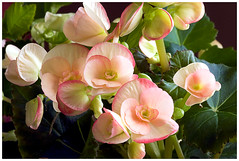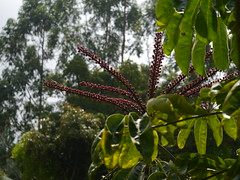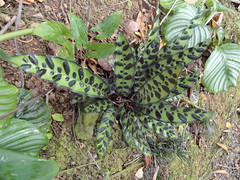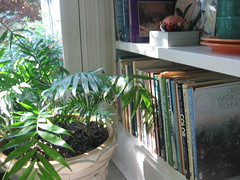![]()
![]()
![]()
Use LEFT and RIGHT arrow keys to navigate between flashcards;
Use UP and DOWN arrow keys to flip the card;
H to show hint;
A reads text to speech;
7 Cards in this Set
- Front
- Back

The Rieger Begonia (Begonia sp.) |
The Rieger Begonia is known for its delicate LIGHTER colors in the inside of the flower, as well as its deep hue on the tips of its petals. In order to take care of this flower, it is advised to purchase it during mid-autumn or early winter and water it regularly. The results will lead to a beautifully grown flower with good conditions and a height of 12-18 inches. Fun fact: Begonias are toxic to indoor cats and can harm them. |
|

The Octopus Tree aka a Umbrella Tree (Schefflera actinophylla) |
The Octopus Tree is a tree that belongs to the Umbrella Tree family and can grow up to 15-20 ft. It has several branches growing with beautiful red flowers sprouting on it. Because of this, it was named the 'Octopus Tree' for its octopus leg-like features. The fact that this tree can outlast and survive many natural obstacles, it attracts many customers' attentions. Fun fact: The Octopus Tree's red flowers are rich with nectar and is constantly swarmed by honey-eating birds. |
|

The Caladium (Caladium Bicolor) |
The Caladium is a popular heart-shaped houseplant that can be easily spotted anywhere and is preferred to be potted in a shady, warm area. It has a very bright color in the insides of the leaves and almost covers the whole flower. The colors you see most often are usually hot pink and white. Fun fact: They are sometimes called "The Heart of Jesus," "Elephant Ear," and "Angel Wings." |
|

The Calathea (Calathea species) |
With its unusual features, the Calathea plant captures the eyes of many from tropic locations. It is used to hold/carry small items because of its strong, thick leaves. In this photo, the plant has patterns symmetrical to each side of the leaf. It's actively grown during October - March because of the moist soil. Fun Fact: Due to a virus going around affecting this particular species,a destruction of their habitats will be probable and some parts of the family will go extinct. |
|

The Parlor Palm (Chamaedorea elegans) |
This particular indoor plant, known as the Parlor Palm, is a tall plant grown with many branches that carry large, floppy leaves. These houseplants are usually displayed in many different places because of its casual, formal look that allows it to be easily found. Fun fact: These common houseplants are used mainly to purify the air in order to breathe easier. |
|

The Spider Plant (Chlorophytum comosum) |
The Spider Plant, also known as the ribbon plant or airplane plant, is an herb that produces long grassy leaves with white stripes in the middle. Sometimes, the leaves can also have a dark green color and the white stripes can be on the outside. Fun fact: They are generally hung in a basket and are popularized in Southern/Tropical Africa. |
|

The Grape Ivy (Cissus rhombifolia) |
The Grape Ivy is a vine that can grow to a tremendous height (depending on how often it is cut) and is wanted by many people because of its strength. This vine needs to constantly be in a warm temperature and be fed little water regularly for good conditions. Its leaves have jagged edges around the corners and has a glossy, smooth texture. Fun fact: The Grape Ivy is often mistaken as Poison Ivy and has leaves that are often mistaken as grapes. |

